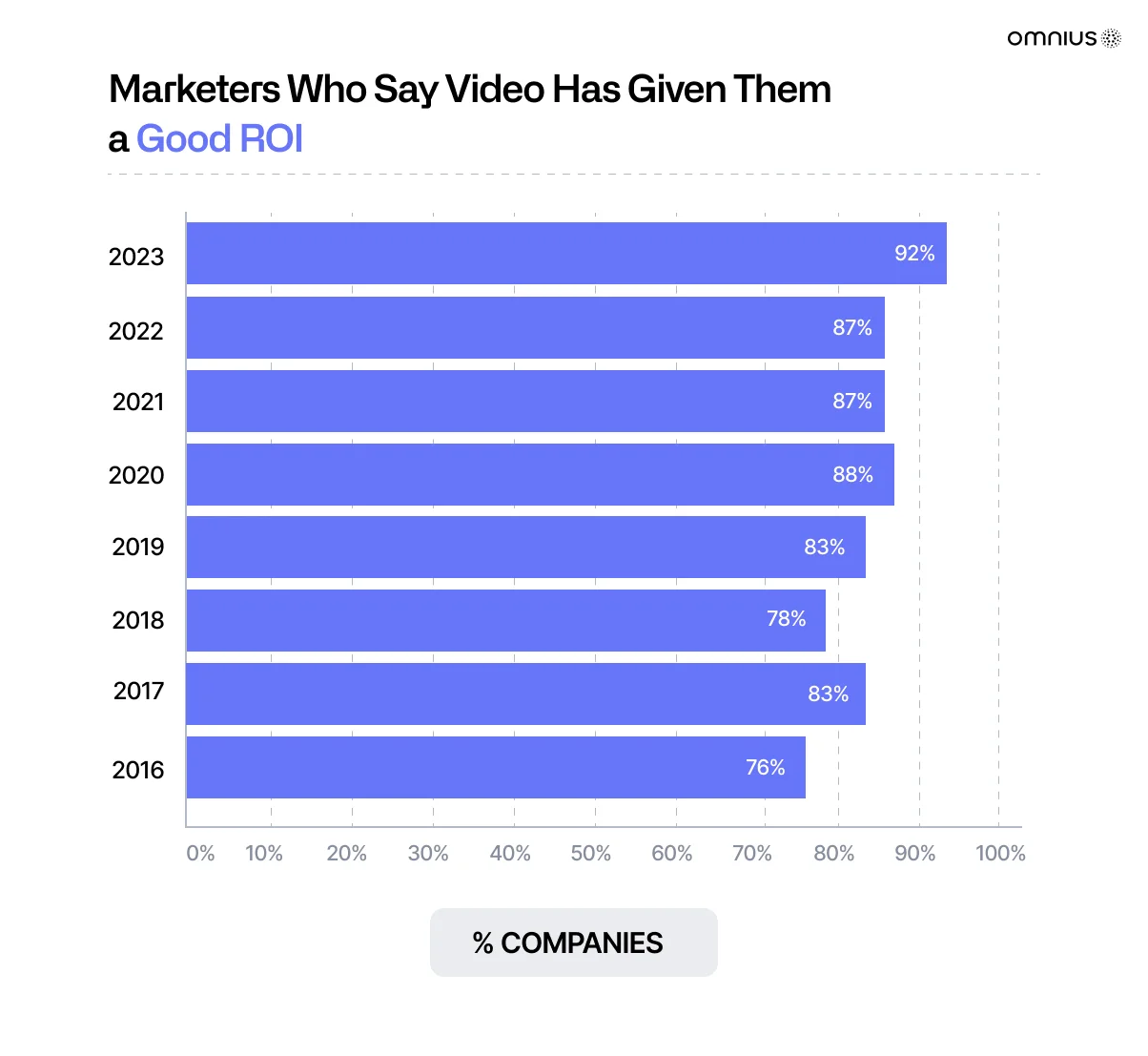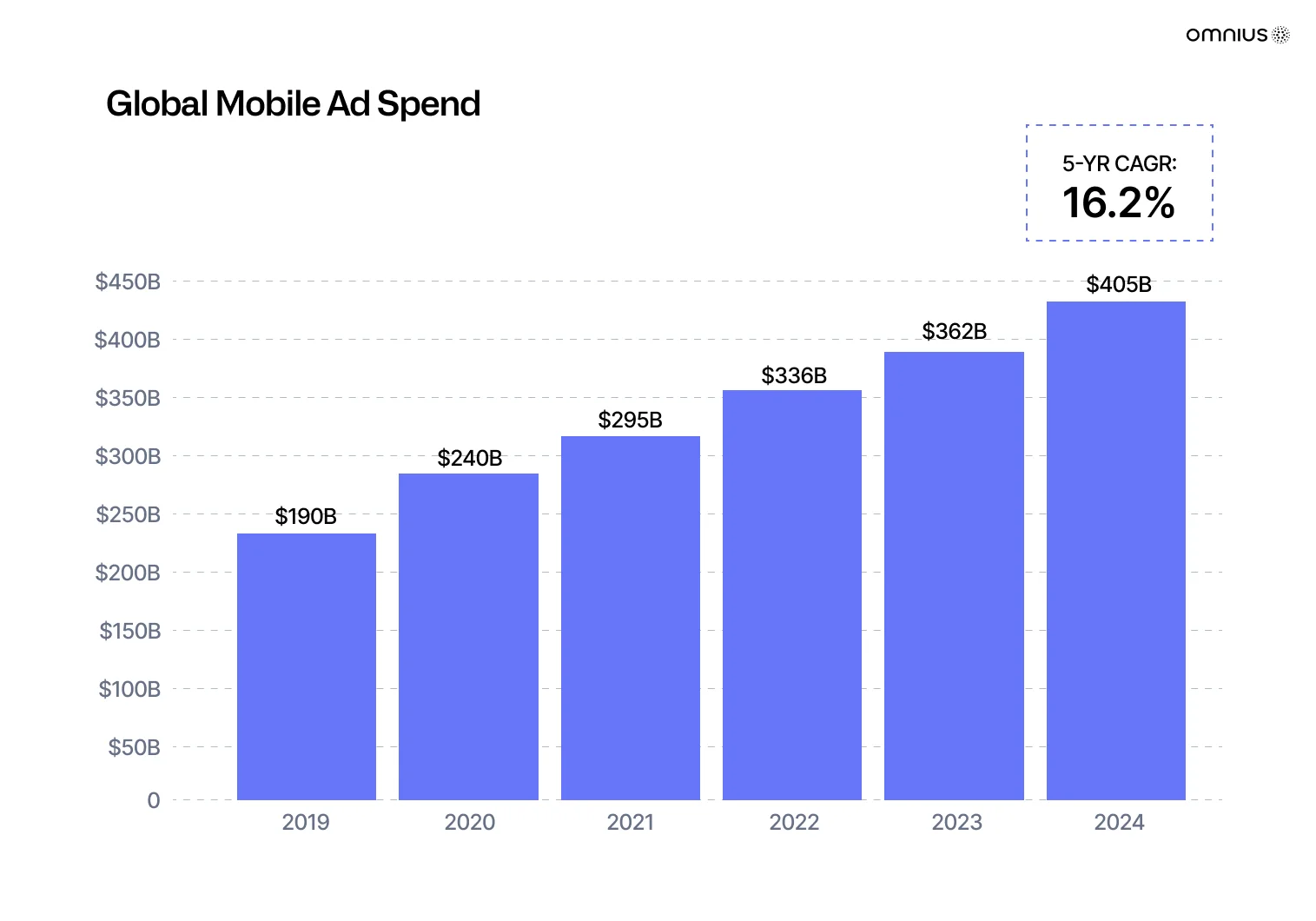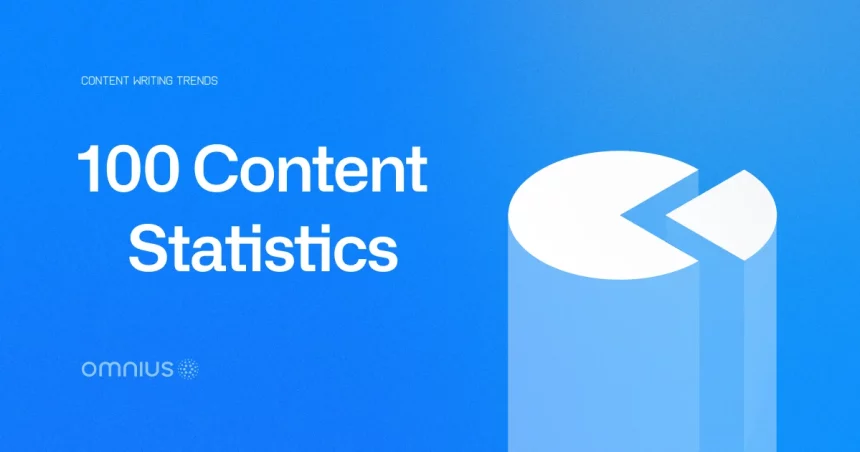Analyzing content marketing statistics helps content creators and marketers make informed decisions, refine strategies, and optimize content for better performance.
To assist you with this, here are content marketing facts that you should be aware of.
Let’s begin!
Content Writing Statistics
Here are some of the most recent content marketing statistics to get you started:
1. Marketers predict that the content marketing sector will generate more than $107 billion in revenue by 2026. (Statista)

2. Approximately 62% of consumers are willing to embrace generative AI in marketing and advertising, as long as it does not negatively affect their overall experience. (Capgemini Research Institute)
3. Email campaigns (87%) and instructive content (77%) are the most popular content marketing strategies used by B2B marketing teams to nurture their audiences. (Content Marketing Institute)
4. 82% of consumers have a more positive attitude toward a brand after reading customized content. (Demand Metric)
5. 91% of B2B marketers utilize content marketing to reach their clients. (Content Marketing Institute)
6. 57% of B2B buyers make their purchasing decisions before speaking with a salesperson. (SERP Watch)
7. 72% of marketers who have employed content marketing report an increase in the number of leads. (Content Marketing Institute)
8. 76% of marketers who are already utilizing generative AI stated they use it for basic content development and copywriting. (eMarketer)
9. In-house writer costs $78,000+ annually per individual, and $400,000+ annually for a team of five. (Bureau of Labor Statistics)
10. People spend an average of seven hours every day reading digital content. (ExplodingTopics)
Blogging Marketing Statistics
When done correctly, blog content development can produce excellent ROI outcomes for your content marketing.

11. Nine out of ten marketers use blog postings as their preferred content format to achieve their content objectives, making it the most popular choice. (SEMrush)
12. 43% of content marketers say they utilize AI to develop ideas, but only 3% use it to compose whole articles (Orbit Media)
13. According to DemandMetric, firms with active blogs generate 67% more leads per month than those without.
14. In 2024, blogging will emerge as a dominant format that marketers will employ for the first time. (OptinMonster)
15. The typical blog article now contains 1,427 words, which is more than 70% longer than ten years ago (Orbit Media).
16. Only 3% of brands consistently write blog posts with more than 2,000 words (Orbit Media)
17. Half of all bloggers struggle to make time and attract readers. (Orbit Media)

18. Every month, more than 409 million users view 20 billion WordPress pages. (WordPress)
19. The average blog bounce rate stands at 82.4%. (Siege Media)
20. According to 82% of marketers, everyday blogging by online companies results in a favorable ROI from inbound marketing. (Invespcro)
Content Strategy Statistics
A content marketing strategy is a plan for creating and delivering relevant content to attract and convert a specific audience in the market. Here are some of the results:
21. 90% of all businesses use content in marketing campaigns.
22. Web traffic is one of the top two most typical indicators of success for content marketing campaigns. (HubSpot)
23. 69% of organizations intend to boost their content marketing expenses.

24. Content marketing costs 62% less than traditional marketing methods, and leads are 6 times more likely to convert.
25. 73% of B2B marketers and 70% of B2C marketers incorporate it into their entire marketing strategy. (SearchEngineJournal)
26. Around 80% of B2B marketers use content marketing, yet only 43% document their strategy; successful companies increase documentation to 60%. (B2B Content Marketing Research)
27. 83% of marketers advocate prioritizing content quality over quantity, even if it entails reducing posting frequency. (Hubspot)
28. The primary objectives behind content development include boosting sales, fostering customer relationships, and enhancing brand awareness. (eMarketer)
29. Content marketing produces more than three times the number of leads as outbound marketing while costing 62% less. (Demand Metric)
30. 72% of North America’s most effective marketers track the ROI of their content marketing. (eMarketer)

Video Content Marketing Statistics
These video marketing statistics demonstrate how other organizations develop an online presence.
31. Short-form video is the most widely used media format in marketers’ content initiatives. (HubSpot)
32. 39% of viewers would never watch a brand’s video again if they had a bad mobile viewing experience.
33. The video has been ranked as the most popular sort of marketing content. (HubSpot)

34. 70% of consumers purchased a product after watching it on YouTube. (Google)
35. Explainer videos have been viewed by 96% of consumers seeking to gain insights into a product or service. (Wyzowl)
36. YouTube is the second most popular channel for businesses that share video content. (Oberlo)
37. After posting a video on social media, 93% of businesses gained a new customer. (Animoto)
38. 97% of consumers and internet marketers said videos assist customers in comprehending their products. (Wyzowl)
39. Marketers who employ video generate 66% more leads annually. (Aberdeen Group)
40. 88% of video marketers believe that video generates a positive ROI.

Audio Content Marketing Statistics

41. Spotify is the most popular online audio platform.
42. 86% of consumers remember podcast advertisements more than any other channel. (Basis Technologies)
43. 25% of marketers use podcasts or other audio material as part of their marketing strategy.
44. 45% of global Internet users between 25-34 listen to podcasts. (BuzzSprout)
45. 47% of marketers who use audio material and podcasts aim to increase their budget in 2024. (HubSpot)
46. 61% of audio listeners pay attention to audio advertisements (compared to only 19% of TV viewers who actively watch TV adverts). (Basis Technologies)
47. By 2028, podcasting is anticipated to be a $94.8 billion industry. (Insider Intelligence)
48. The reported podcast listener gender breakdown is 52% males and 48% women. (Edison Research)
49. 80% of podcast listeners listen to the entire or majority of each episode. (Podcast Insights)
50. The digital audio advertising business is expected to generate $13 billion in ad revenue by 2028. (Statista)

Email Content Marketing Statistics
Here are the crucial email marketing statistics that every marketer should be aware of:
51. There are 4 billion daily email subscribers. This figure is predicted to increase to 4.7 billion by 2026. (Statista)

52. 72% of consumers favor email marketing over other methods. (SERP Watch)
53. 87% of B2B marketers consider email to be one of their most effective free organic distribution methods. (Content Marketing Institute)
54. The email marketing industry is anticipated to reach a projected growth of $17.9 billion by the year 2027. (Statista)

55. Segmented email campaigns have a 14.31% greater open rate than non-segmented emails. (MailChimp)
56. 74% of Baby Boomers believe email is the most personalized way to engage with brands. (HubSpot)
57. 31% of B2B marketers believe email newsletters are the most effective strategy to nurture leads. (Content Marketing Institute)
58. 78% of marketers say subscriber segmentation is the most effective method they utilize for email marketing campaigns. (HubSpot)
59. For every dollar spent on email marketing, marketers gain an average ROI of $42. (Litmus)
60. 61% of consumers prefer to be reached by brands via email. (Adobe Campaign)
Search Engine Optimization Statistics
Adding SEO methods to your marketing campaigns can improve your website’s exposure and rankings on search engine results pages (SERPs).

61. 88% of marketers who now invest in SEO intend to retain or expand their investment.
62. 97% of people learn about local companies online rather than anywhere else. (SEO Tribunal)
63. Over the last two years, searches for “near me” or “close by” surged by more than 900%. (Chat Meter)
64. The first page of local search results is chosen by 92% of individuals conducting searches. (SEO Expert)
65. Google’s algorithm uses more than 200 parameters to rank web pages. (Backlinko)
66. Less than 1% of searchers visit the second page of Google results. (Backlinko)
67. Snippets have the greatest overall CTR (42.9%). (First Page Sage)
68. On average, page-one ranking content for popular keywords has changed in the last 1.31 years. (Siege Media)
69. 70% of marketers believe that A/B testing is necessary to increase conversion rates. (ZipDo)
70. The higher the intended Keyword Difficulty, the more frequently it should be refreshed and updated. (Siege Media)

Conversion Rate Optimization (CRO)
Creating a well-performing website that will be simple to scale as the company expands should always be the aim and these stats prove it.
71. More than one-third of marketing leaders mention conversion rates as a major KPI that they prioritize tracking. (HubSpot)
72. 19% of firms that use AI content generation tools claim a highly effective content strategy. (Siege Media)
73. The average website’s bounce rate is 37%, and its SEO click-through rate is 13%. (HubSpot)
74. The average conversion rate for all e-commerce sites is less than 2%. (Statista)
75. Almost two out of three marketers say their average landing page conversion rate is less than 10%. (HubSpot)
76. Email marketing is one of the most effective channels for driving conversions, with a conversion rate of 2.8% for B2C businesses and 2.4% for B2Bs. (FirstSagePage)
77. 55% of marketers think obtaining leads that convert is one of the major obstacles in producing new leads. (Webfx)
78. Conversion rates improve by 80% when pain points and inquiries are addressed on a landing page. (Serpwatch)
79. Conversion rates are 73% higher when marketers target prospects based on their location in the sales funnel. (Webfx)
80. When you boost website speed by one second, conversion rates increase by 7%. (Webfx)

Organic Search Statistics
Adopting SEO methods and best practices is crucial for enhancing a website’s position in search engine results pages (SERP), and these statistics support this assertion.
81. Organic search accounts for 85.19% of all blog visitors. (Animalz)

82. 75% of marketers expect AI-enabled search engines to boost blog impact, with 68% anticipating increased site traffic. Only 9% foresee harm to blog traffic. (HubSpot)
83. Organic search results that rank on page 1 of Google have an average of 1,447 words. (Backlinko)
84. Google organic search accounts for 57.8% of the world’s web traffic. (Sparktoro)
85. 39% of marketers rank optimizing on-page content based on keywords as their top SEO approach. (HubSpot)
86. 86% of people reject sponsored banner ads and instead click on organic search results. (Study by Infolinks)
87. The total number of clicks from the third to tenth results is fewer than that of the first organic search result. (First Page Sage)
88. Organic search accounts for 51% of overall content consumption. (Brightedge)
89. 29% of marketers cite SEO as a top trend they use. (HubSpot)
90. Organic clicks made up 45.1% of total search result clicks. (Forbes)

Mobile SEO statistics
Mobile phone usage is rising as a marketing trend, with people frequently accessing websites for information. Here’s the data:
91. Mobile search is the preferred choice for younger users, with 80% of Gen Z and 62% of millennials indicating that they primarily utilize mobile search over desktop. (HubSpot)
92. Mobile advertising spending is expected to reach approximately $400 billion by 2024. (DataAI)

93. 53% of smartphone consumers will abandon a website that takes more than three seconds to load. (ThinkWithGoogle)
94. Google holds over 95% of the global mobile search market share. (StatCounter)
95. 92.1% of internet users say they use their mobile phones to access the internet, compared to 71.2% who use computers. (Hoot Suite)
96. 51% of smartphone users discovered a new company or product by doing a search on their phones. (Think With Google)
97. Mobile voice searches are three times more likely to be about something local than text searches. (Search Engine Land)
98. 48% of customers believe that if a website or app is not mobile-friendly, it is a clear sign that the company does not care. (SAG IPL)
99. Mobile devices account for 41% of email views, including 75% of Gmail users’ email views. (MailButler)
100. Mobile users interact with brands twice as much as they do anyplace else. (Think With Google)

Conclusion
Staying up to date on the latest marketing statistics will enable you to lead your team effectively and keep your firm competitive.
Whether it’s blogging, video content, or SEO strategy, apply these ideas to build a successful content marketing strategy that will last for years.
Or let Omnius do it for you.
Book a free 30-minute conversation to discuss how we can help your business thrive!
Nguồn: omnius.so








